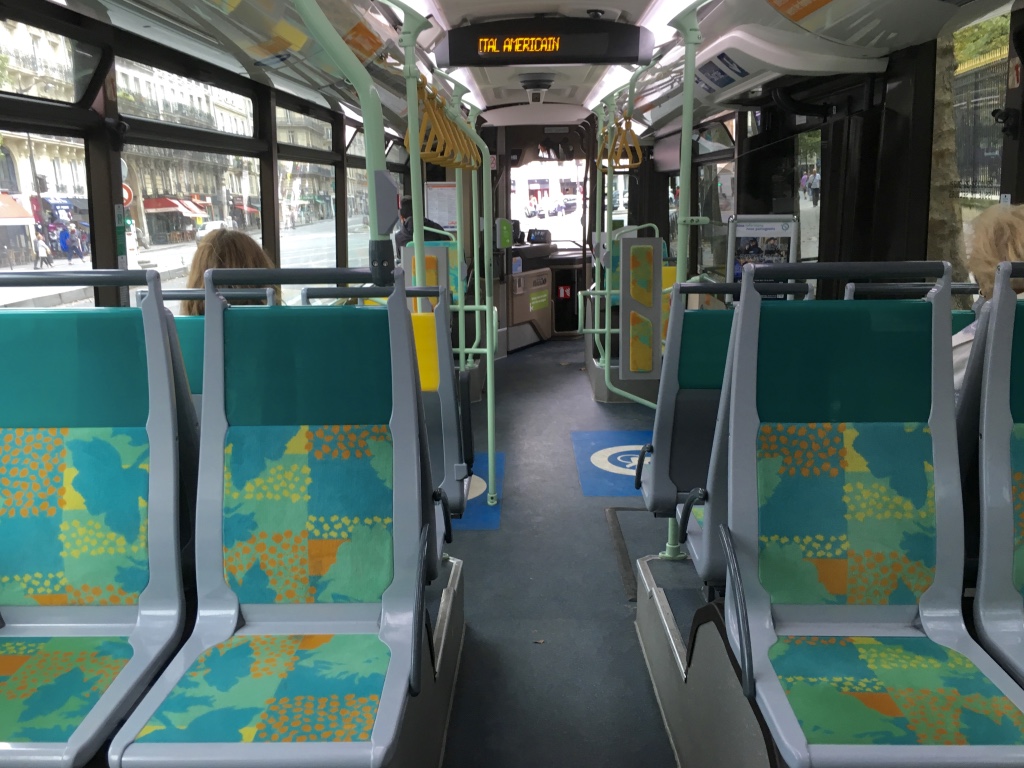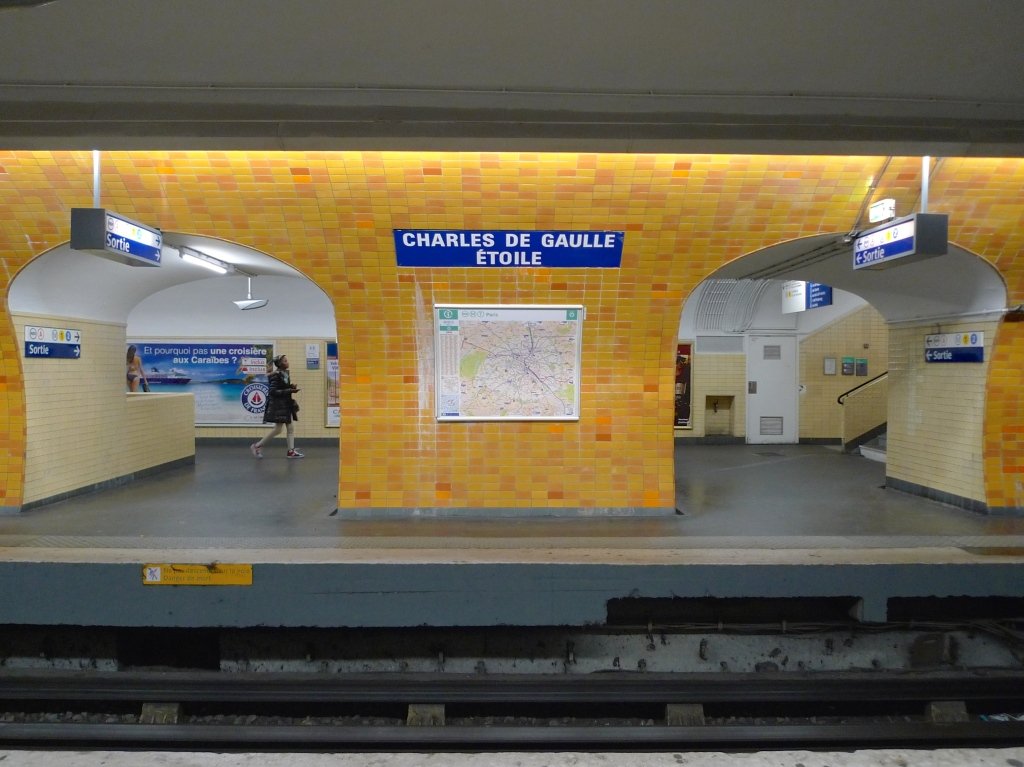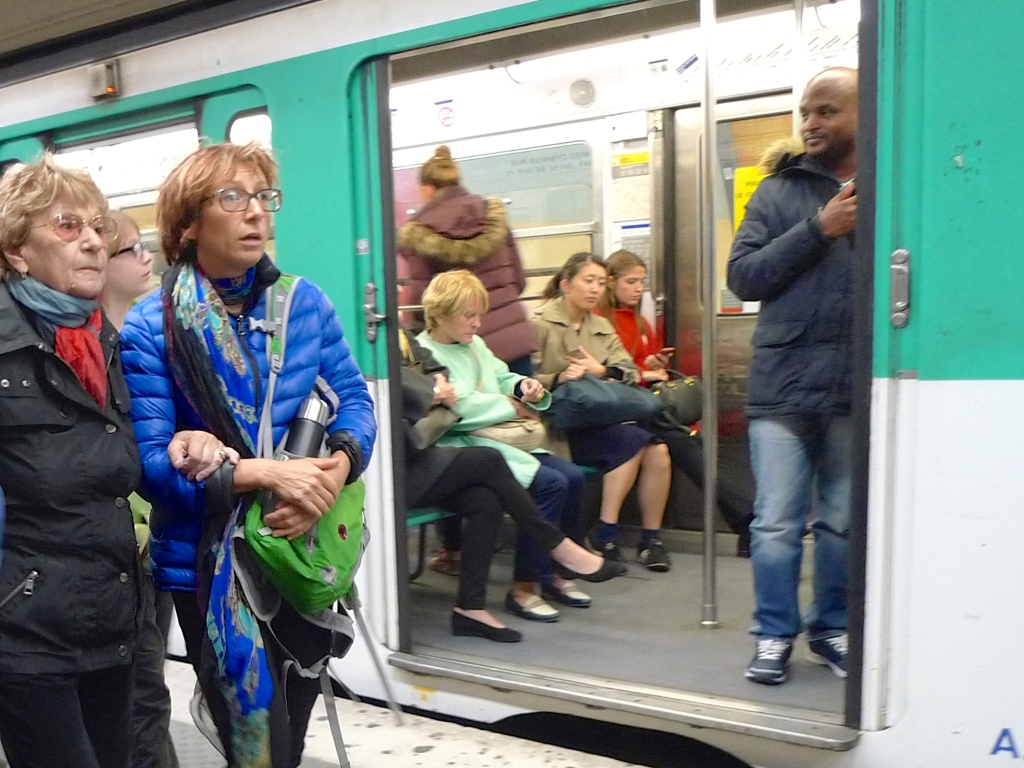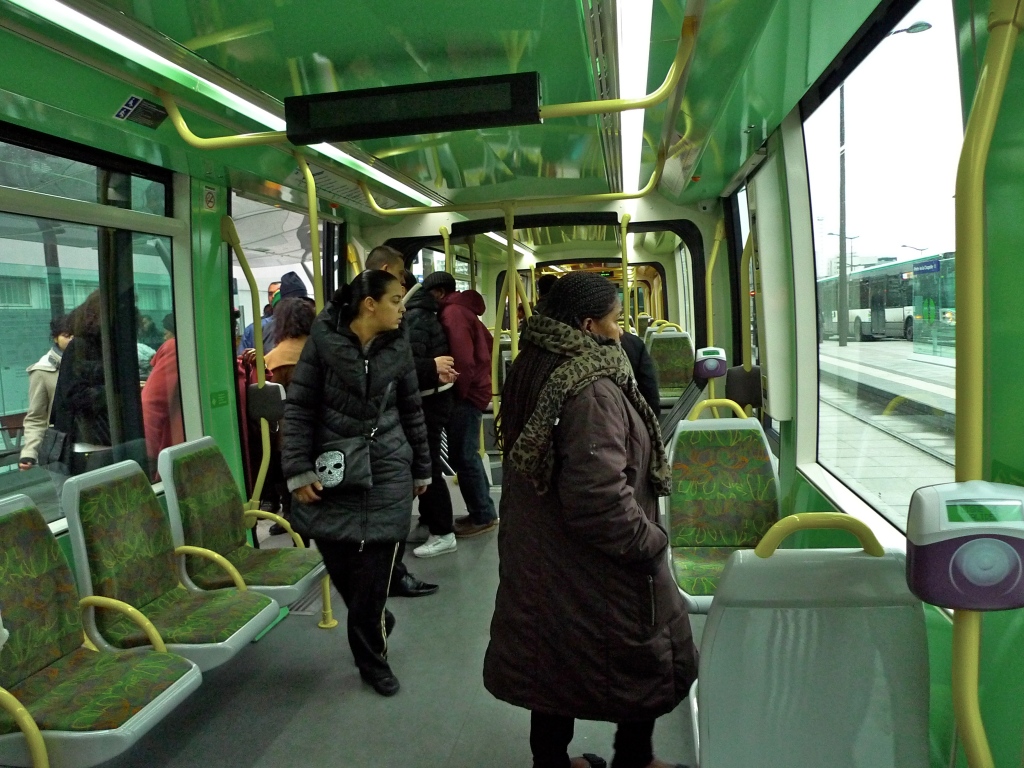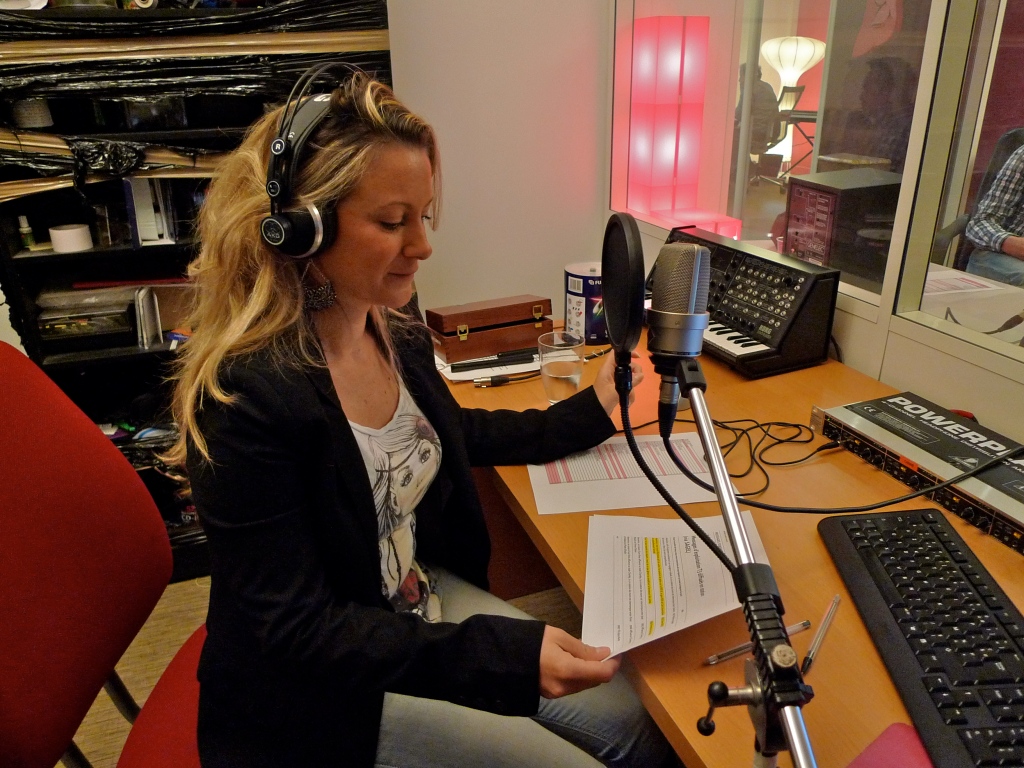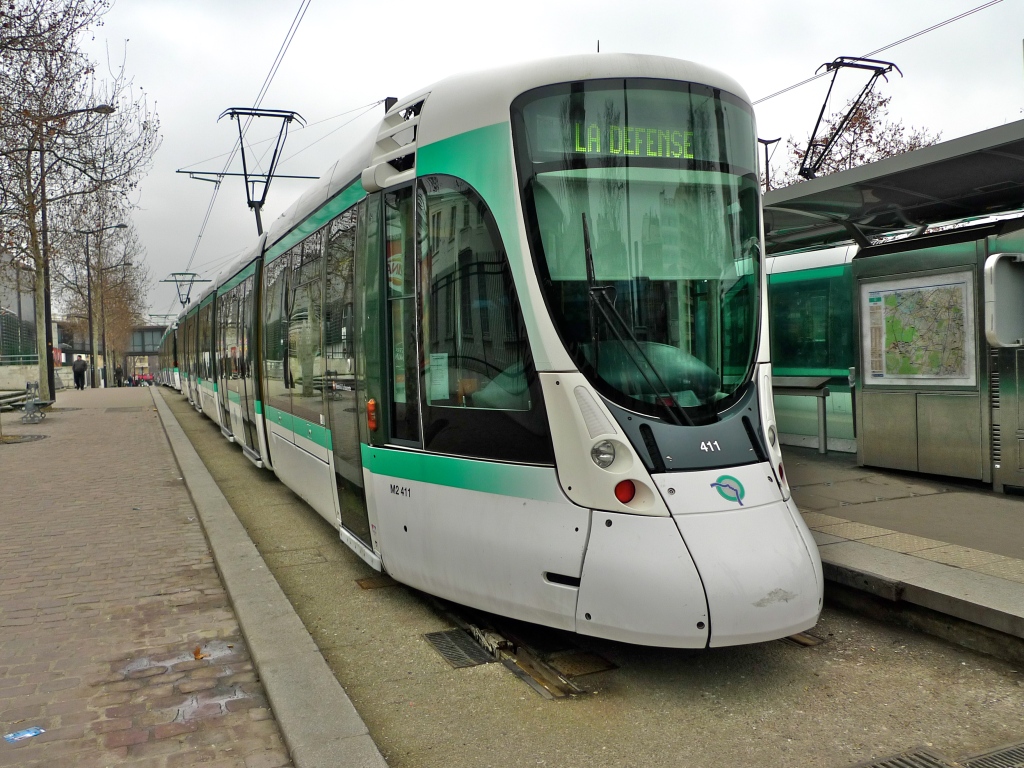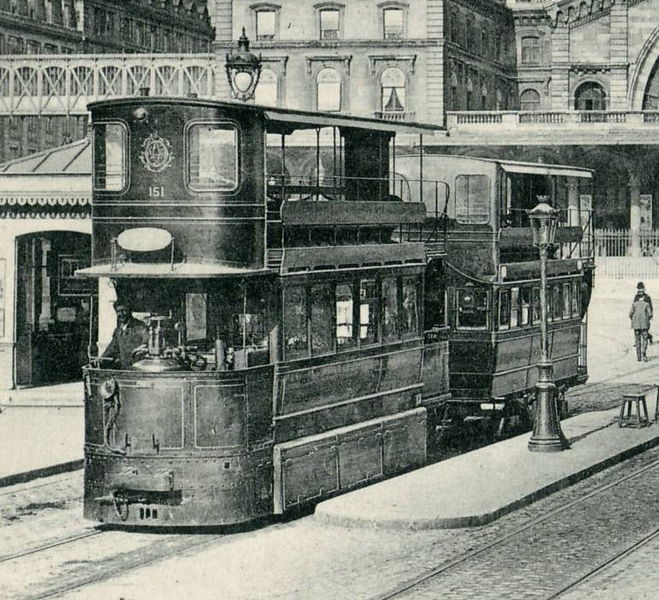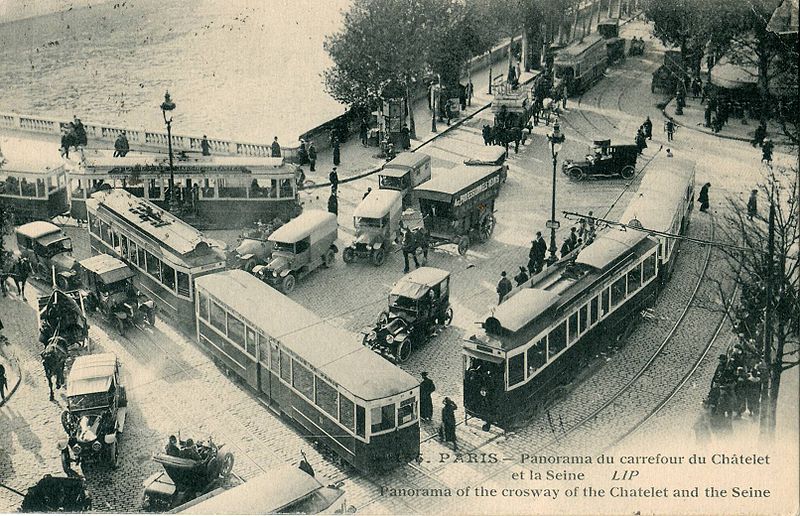Music in the Métro
IT’S BEEN A WHILE since I last featured any street music on this blog but I now have the opportunity to put that right.
Changing trains at the Métro station Charles de Gaulle Étoile the other day I came upon a street musician who is often to be found playing his xylophone on the platform of Métro Line 6, the line that follows a semi-circular route around the southern half of the city from Étoile to Nation.
Getting a seat on a train on Line 6 at Étoile can sometimes be a challenge. A large crowd often assembles on the platform and I usually find myself forsaking the pleasure of listening to the music in favour of elbowing my way through the crowd in the hope of securing a seat on the arriving train. Which is a shame really because most of the musicians playing in the Métro stations are very good.
It’s not generally known, but musicians who play in the Métro – at least those who play there legally – have actually been selected to play there following a formal audition process.
The auditions were introduced because the Métro was becoming infested with itinerant so-called musicians who could barely scrape out a note from their battered violins or accordions.
Now, some 2,000 musicians attend the auditions and the artistic director of the Musiciens du Métro programme and representatives of RATP, the Paris mass-transit authority, judge their performances. Only 300 of them will be awarded the coveted badge that lets them play legally in the Métro and so, with a potential audience of some four million passengers a day, that’s a gig worth having.
When I was changing trains at Étoile the other day I had time on my side so I stopped to listen to the xylophone player, one of the successful badge holders, playing his music. And what a delight it was!
Music on the Métro:
Paris Tramway Extended – With New Sounds
PARIS TRAM LINE 3, the orbital tram route or, the tramway des Maréchaux, has been extended and is open for business.
Tram Line 3 follows the site of the old military road that ran along the inside of the fortified Thiers Wall, the last defensive wall surrounding Paris built around 1840. The wall was demolished in the 1920s, enabling the building of a series of boulevards encircling the city each named after Marshals of Napoleon’s French Empire, and consequently called the Boulevards des Maréchaux. These boulevards run just inside the city limits with the Boulevard Périphérique, the wall of traffic that surrounds Paris, running just beyond them on the site of the former Thiers Wall itself.
Tram Line 3 has been running along part of this route, from Pont du Garigliano to Porte d’Ivry, since December 2006. Work began on extending the route in 2009, adding 14.3km of track and 24 new tram stops, and the extended line was opened on 15th December 2012.
The extended route heads northeast from Porte d’Ivry, crosses the Seine to an interchange with Métro Line 1 at Porte de Vincennes. It continues north through the Lilas district where it connects with metro lines 3bis, 11 and 7bis, then curves westwards to terminate at Porte de la Chapelle, where it connects with Métro Line 12.
The cost is said to be €651·9m, of which €433·6m has been funded by the city and €218·3m by Ile-de-France. The city has contributed a further €149m for urban enhancements, whilst RATP has funded the 25 additional Citadis 402 trams at a cost of €77m.
When the line extension was opened, Tram Line T3 was divided into two separate services, the existing route becoming Line T3a, linking Pont du Garigliano with Porte de Vincennes, while Line T3b covers the eastern and north eastern section from Porte de Vincennes to Porte de la Chapelle.
The Paris City Council has also now given approval for a further 4.7 km extension of T3 from Porte de la Chapelle to Porte d’Asnières expected to open in 2017. It is envisaged that a further extension from Porte d’Asnières to Porte Maillot is possible but, as yet, there is no talk of an extension from Porte Maillot to Pont du Garigliano to complete the circle around Paris.
Shortly after the new extension opened I went to have a look. I travelled from the very smart tram stop at Porte de Vincennes to the end of the current extension, Porte de la Chapelle and I was very impressed.
The trams are the Citadis 402 model built in France by Alstom. They have a low-floor ensuring easy access for people with reduced mobility and they are equipped with air-conditioning and CCTV. Each tram comprises seven modules with a total capacity of 304 people. Six asynchronous motors with a rated output of 120 kilowatts drive each tram and the 750 volts of power required is supplied by overhead pantograph.
The trams travel at up to 20km/h (although they can theoretically travel much faster) and they take priority at all road junctions. They are extremely quiet thanks, in part, to the tramway being grassed over for a good part of the route. This helps to reduce vibration and noise to both those inside and outside the tram. Incidentally, to save water the grass is watered automatically at a variable rate depending on the weather.
The trams run every four to five minutes during peak hours and six to eight minutes off-peak, Monday to Friday. On Saturday, the interval between trams varies from six to nine minutes during the day and seven to ten minutes on Sundays and holidays.
And now for the really exciting news …
For a long time I’ve taken a great interest in the sounds of the Paris mass transit system and so I was especially excited to hear that new, very innovative, tram announcements are being incorporated on Tram Line 3 to coincide with the extension of the line.
The City of Paris and RATP (the Paris mass transit authority) have commissioned selected contemporary artists to create special artworks along the route of Tram Line 3. One of the artists, Rodolphe Burger, former leader of the French rock band Kat Onoma, and head of La Compagnie Rodolphe Burger, was asked to come up with an innovative way of announcing the names of the tram stops. RATP stipulated that it was important that each announcement should have two inflexions and that the sounds should be heard but not be intrusive.
The work took two years to complete and Rodolphe Burger and his team have now come up with 42 different short melodies for each of the 42 tram stops on Tram Line 3 and each of the tram stop names are announced by different voices. The idea was to mix different type of voices, male and female, from any age, any background, any accent, including the occasional celebrity! A call for volunteers met with a large response especially among people living near the line. In total, 602 different voices were recorded.
So when you travel on Tram Line 3, you never know which voices you will actually hear, only the melodies remain the same.
Thanks to RATP, I am able to share with you some examples of the sounds that Rodolphe Burger and his team created in their original form – before they made their way onto the trams.
Examples of the tram stop announcements:
Sounds courtesy of RATP
And it’s not only in sound where RATP is innovative. Of the eighteen tram stops on Tram Line 3b between Porte de Vincennes and Porte de la Chapelle, seven of them are named after prominent women:
(Marie de) Miribel; founder of the hospitalières de la Croix Saint-Simon,
Séverine; writer, journalist and feminist,
Adrienne Bolland; French aviator and the first woman to fly over the Andes between Chile and Argentina,
Delphine Seyrig; Stage and film actress and film director,
Ella Fitzgerald; American jazz singer, the “Queen of Jazz”,
Rosa Parks; African-American civil rights activist and,
Colette Besson; French athlete and winner of the 400 m at the 1968 Summer Olympics in Mexico City.
In order to give you a snapshot of what the new announcements sound like from inside a busy tram, I’ve extracted these seven tram stop names from my journey for you to listen to.
Seven station names:
And, if you would like a more immersive experience, why not join me for the whole journey from Porte de Vincennes to Porte de la Chapelle. The journey takes thirty-five minutes and you can hear all eighteen tram stop announcements in real time just as I and all the other passengers heard them.
Porte de Vincennes to Porte de la Chapelle:
With grateful thanks to Song Phanakem, the man responsible for the sound identity of RATP, whose help is always invaluable and much appreciated.
The Voice of the 39 Bus – continued …
AT THE BEGINNING of June I published a blog piece entitled “The Voice of the 39 Bus” in which I described the recording of the bus stop announcements for the 39 bus route in Paris. I also introduced Andréa, the voice of the 39 bus.
I had been given exclusive access to attend the recording session held at the studios of Sixième Son, Europe’s leading audio branding and sound identity agency. Song Phanekham, the man responsible for the sound identity of RATP (Régie Autonome des Transports Parisiens), the Paris mass transit authority, was there and he directed the recording session.
All the names on the 39 bus route were recorded by Andréa by repeating them two or three times, sometimes with a slightly different inflection, so as to give Song more choice in the editing. Great care was taken to ensure exactly the correct pronunciation and inflection for each name.
An extract from the recording session:
The 39 bus travels from the Gare du Nord in the north of Paris to Issy – Frères Voisin in the south-west. The journey takes about an hour depending on the traffic.
The terminus at Issy – Frères Voisin is simply an ordinary bus stop in an ordinary leafy street surrounded by tall rather plain buildings.
I travelled the full length of the 39 bus route on Saturday from the Gare du Nord to Issy – Frères Vosin and back again and the good news is that I was accompanied by Andréa, or at least by her voice, which has now been installed in the 39 buses. I recorded my journey in both directions.
Travelling this route is rather like travelling on a tour bus, you get a really fascinating view of this city.
Some sounds from the 39 bus route:
Here I have selected a montage of some, but by no means all, of the sounds of the journey which, for those of you who know Paris, will conjure up fascinating images … Porte Saint-Martin, Porte Saint-Denis, Poissonnière – Bonne Nouvelles, Grand Boulevards, Bibliothèque Nationale, Palais Royal – Comedie Française, Musée du Louvre, Pont du Carroussel – Quai Voltaire, Saint-Germain des Près, Sèvres – Babylon, not to mention the Hôpital des Enfants Malade, Colonel Pierre Avia and of course the not quite so glamorous, Issy – Frères Voisin. All this comes for the price of a bus ticket and the joy of having one’s bones rattled as the bus bounces over the all too frequent pavé.
There are couple of things you might find of interest.
First, Paris bus stop names are derived from the names of streets or buildings in the vicinity of the bus stop so, for example, the stop for the Hôpital des Enfants Malade is right outside the hospital. Some bus stop names though comprise two names like Palais Royal – Comedie Française for example. This simply means that the bus stop is between the Palais Royal and the Comedie Française just as the stop Pont du Carroussel – Quai Voltaire is at the junction of the Pont du Carroussel and the Quai Voltaire. It’s simple really.
Second, the bell often heard on a Parisian bus is not, as in some countries, a signal from a passenger to the driver to stop at the next stop but rather a signal from the driver to those outside the bus to beware. A signal best heeded!
The Bus Stop of the Future
IF YOU WERE ASKED to design the ‘bus stop of the future’ what would you come up with? Well the boffins at RATP have been applying their minds to that question and this is what they have come up with.
It’s a concept bus stop on the Boulevard Diderot opposite the Gare de Lyon railway station and it’s used by three daytime bus routes as well as five night bus services.
Designed by urban design specialist Marc Aurel, this bus stop is really a multi-purpose public space designed to blend into the urban environment. The design is modular and can be tailored to suit any location.
Whilst here, you can buy a bus ticket, get information about the neighbourhood or have a coffee.
You can hire an electric bike …
… or even borrow a book from the small lending library. There is free wireless internet access and improved space and seating for bus users. The lighting in the bus stop varies automatically to suit day and night conditions and the central section is heated in the colder weather. The signage is excellent and the touch screens give easy access to a mass of information.
Of special interest to me is the innovative sound environment in the bus stop.
Some of the sounds inside the bus stop:
The sounds inside the bus stop vary. Music composed by Michel Redolfi is broadcast when the bus stop senses that a bus is approaching and a variety of sounds are generated when a hand is passed over a sonic panel.
Interestingly, there are no loudspeakers in the bus stop. Instead of using speakers, the sounds are broadcast directly through the glass roof and the vertical glass panels making up the walls of the bus stop.
What the boffins at RATP have done is to come up with a concept bus stop where spending time is about so much more than simply waiting for a bus. It may be a concept bus stop at the moment but let’s hope that it, or at least something like it, could become quite normal before too long.
Bravo RATP!
The Voice of the N° 39 Bus
I HAVE SOME EXCTING NEWS! The bus stop announcements on the Paris buses are being updated and the current computer generated Text to Speech voices are being replaced with real voices recorded specifically for each bus route. Soundlandscapes has been given exclusive access to see how the new announcements are produced.
Song Phanekham is the man responsible for the sound identity of RATP (Régie Autonome des Transports Parisiens), the Paris mass transit authority, which includes the Metro, the RER, the buses and the trams. Amongst other things, he is responsible for the excellent, four-language, “Mind the Gap” announcement on the newly automated Metro Line 1.
I met Song last week at the studios of Sixième Son, Europe’s leading audio branding and sound identity agency, in the 5th arrondissement. Working with Sixième Son, RATP are gradually improving the customer experience by producing clear, distinctive and friendly announcements that have a very Parisian feel to them across the entire RATP transport network. I watched as the bus stop announcements for the N° 39 bus route were recorded.
The N° 39 bus route is one of around 350 routes that RATP operates. It crosses Paris between the Gare du Nord and Issy-Frères Voisin. If you travel on a 39 bus today, these are some of the sounds you will hear.
Sounds inside a N° 39 Bus today:
It is these dry, monotone announcements that are being replaced. The objective is to make travelling on public transport a more welcoming and friendly experience. I know that sounds like something straight out of a marketing brochure but having seen at first hand the effort RATP are making to produce more genuinely customer friendly announcements, I have to applaud what they are doing.
If the announcements are to be less robotic and more welcoming, and if there is to be a real voice specially recorded, then there has to be a face behind the voice.
Let me introduce Andréa, the voice of the N° 39 bus.
In this sonic modernisation programme, RATP decided not to use actors or voice-over artists to make the new announcements. Instead, they held auditions within RATP and selected some of their own employees to do the job. Andréa is one of several employees selected.
From the control room, I watched as the names of all the bus stops on the N° 39 route were recorded. The atmosphere was relaxed but very professional as Andréa went about her work.
Recording the announcements:
She spoke the name of each bus stop and then repeated it two or three times, sometimes with a slightly different inflection, so as to give the director and the editor more choice. Song directed the recording session and he intervened gently from time to time to ensure that he got the result he was looking for. I was impressed by the care taken to ensure exactly the correct inflection on each name but I was even more impressed by the care taken to ensure the correct pronunciation.
One of the stops on the N° 39 route is Abbé Groult. Andréa had a view about how to pronounce ‘Groult’ and Song had a different view. In the end, it was decided to record both versions and then to seek advice from the Académie Française, custodian of the French language. The Académie ruled that, “Dans les noms qui se terminent en -ult, les consonnes finales ne se font pas entendre. On dit l’abbé grou.” So there we have it on the highest authority, the letters ‘l’ and ‘t’ are silent.
Different versions of Abbé Groult:
After the recording session came the editing and the final selection of the sounds to be used.
Editing and selection:
Again, great care was taken to ensure that everything was perfect. A debate ensued about the pronunciation of Desnouettes-Vasco de Gama. That pesky little ‘de’ between Vasco and Gama has a lot to answer for. And ‘Grands Boulevards’ wasn’t plain sailing either. Eventually though, everyone had their say, the editor worked his magic and the finished sounds were to everyone’s satisfaction.
During the next two or three weeks, these sounds will be uploaded into the sound systems of all the buses that work the 39 route. Then, as if by magic, the GPS system on each bus will activate the audio announcements and the sound of Andréa’s voice will be heard as each bus stop comes into view.
This recording session was just one of many that are being held to update the announcements on the Paris buses, the Metro, the RER and the Trams and to make them more user friendly. From late June and early July, Andréa will also feature on bus routes 70, 82 and 92. Around mid-June, new announcements will appear on bus routes 43 and 95 with a male voice. Then the announcements on two major BRT (bus rapid transit) lines in the southeastern suburbs, Tvm and 393, will be updated.
Well done RATP!
I am very grateful to Song Phanekham, RATP and Sixième Son for allowing me to attend this recording session and for their hospitality. And of course, special thanks to Andréa for allowing me to record her being recorded.
Paris Trams
TODAY, THE TRAMS IN PARIS are modern, sleek and efficient but their history goes back to the middle of the nineteenth-century, predating the Paris Metro by almost fifty years.
From 1855 until the end of the 1930’s, Paris enjoyed an extensive tramway network. In the early days the trams were horse powered.
Horse trams though presented a number of challenges. They were relatively slow and several teams of horses were required for each tram each day – not to mention the tons of horse manure littering the streets. Mechanical traction was the answer.
By 1887, trams powered by compressed air had arrived in Paris. Steam driven trams were introduced in the 1880’s and 1890’s but, by the end of the nineteenth-century, electrification of the trams was underway.
In the late nineteenth and early twentieth centuries trams were prolific in Paris but the advent of the motorcar and motorised buses, without the need for costly infrastructure, marked the beginning of the end for the tram. The last of the tram routes in Paris closed in 1957.
But that is not the end of the story. The increasing need to connect Paris with its suburbs has led to the re-birth of the Paris tram.
Equipped with a new generation of trams, Paris now has four tram lines with more due to be built. Line T1 opened in 1992, line T2 in 1997 and lines T3 and T4 opened in 2006.
Of these tram lines the one that I’m most familiar with is Line T2 which runs south from La Défense to Porte de Versailles. Operated by RATP, the Paris mass transit authority, Line T2 is 13.7 km long, has seventeen stations and is used by some 20 million people a year. Each tram can carry 440 people.
As with the Paris Metro, the names of the stations evoke images from French history.
Stopping at stations like Jaques-Henri Lartigue (French photographer and painter), Henri Farman (French aviator and aircraft designer) and Suzanne Lenglen (French tennis player and winner of 31 Championship titles between 1914 and 1926) seem to add colour to the journey.
And again, like the Metro, RATP have taken trouble with the sound of the announcements inside the tram. Each station name is announced twice and at the terminus the announcements appear in several languages each spoken by native speakers.
Inside a tram on Line T2 from the station Henri Farman to Porte de Versailles:
Today’s Paris trams are remarkably quiet both when listening inside and from the outside. In fact, from the outside, it’s much easier to hear the sound of the traffic than it is to hear the sound of the tram.
A Tram at Porte de Versailles:
The new generation of Paris trams are far removed from their nineteenth-century ancestors. Quiet, sleek, efficient and comfortable they are an integral part of the Paris public transport network.
‘Mind the Gap’ Goes International
I HAVE EXCITING NEWS from Line 1 of the Paris Metro! The 725,000 passengers who travel on this line every day, including me, are now enjoying new, driverless, automatic trains. And what’s more, we have new, up-market ‘Mind the Gap’ announcements as well.
In November last year, the first automatic trains went into service on Line 1. RATP, (Régie Autonome des Transports Parisiens) the Paris mass transit authority, sent me a letter to tell me about this and to say that two new automatic trains a month will be introduced so that by the end of 2012 Line 1 will be completely automatic.
Paris already has of course the world’s first fully automated Metro line, Line 14, which runs from Saint Lazare to Olympiades on a north-west south-east diagonal across the centre of Paris. The conversion of Line 1 is another first. It’s the first time that an old, working Metro line (Line 1 was built in 1900) has been converted to be fully automatic without any disruption to the service. That’s quite an achievement. The work to reconfigure the platforms and to install the sophisticated electronics began in 2008 and it’s been a long process. I know because I’ve watched it all unfold. Sometimes, it seemed that the work would never end.
The Automatic MP 05 Train
The new automatic, air-conditioned trains are built by Alstom and they have been designated with the appellation, MP 05. MP (matériel pneus) means that they have rubber tyres. 05 refers to the date of the original tender for these trains that was issued in 2005. These new trains are replacing the existing MP 89’s, which I’ve become very fond of since I’ve been here. The good news is that the MP 89’s will have an afterlife. As they’re removed from Line 1 they will see many more years of service on Line 4.
The MP 89 Train
As if all this wasn’t exciting enough I have even more exciting news! The new, automatic trains on Line 1 have new announcers and a special new announcement for ‘Mind the Gap’.
A source inside RATP, the man responsible for the sound identity of the Paris Metro, has given me some really interesting information, which I’m delighted to share with you. RATP take their sound identity very seriously. They have introduced foreign languages for some announcements and they pay particular attention to their authenticity by using native speakers. French and English are always present but they add other rotating languages, German, Spanish, Italian and Japanese.
‘Mind the Gap’ goes international:
There we go, ‘Mind the Gap’ in French, English, German and Japanese.
The male voice used in this announcement is a British RATP staff member working in the marketing department. The French female voice is a former metro train driver on Line 1.
Well done RATP not only for excelling at converting Line 1 to automatic without any disruption but also for having the foresight to give such a high profile to the sound identity of the Paris Metro.
I can’t help wondering what Fulgence Bienvenüe, the one-armed railway engineer and ‘Father of the Metropolitan’ would make of it all. I like to think he would approve.
To hear more of ‘Mind the Gap’ click on the links below:







